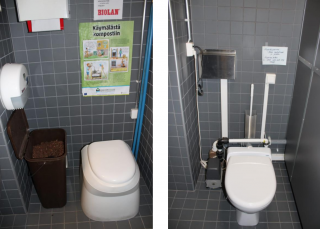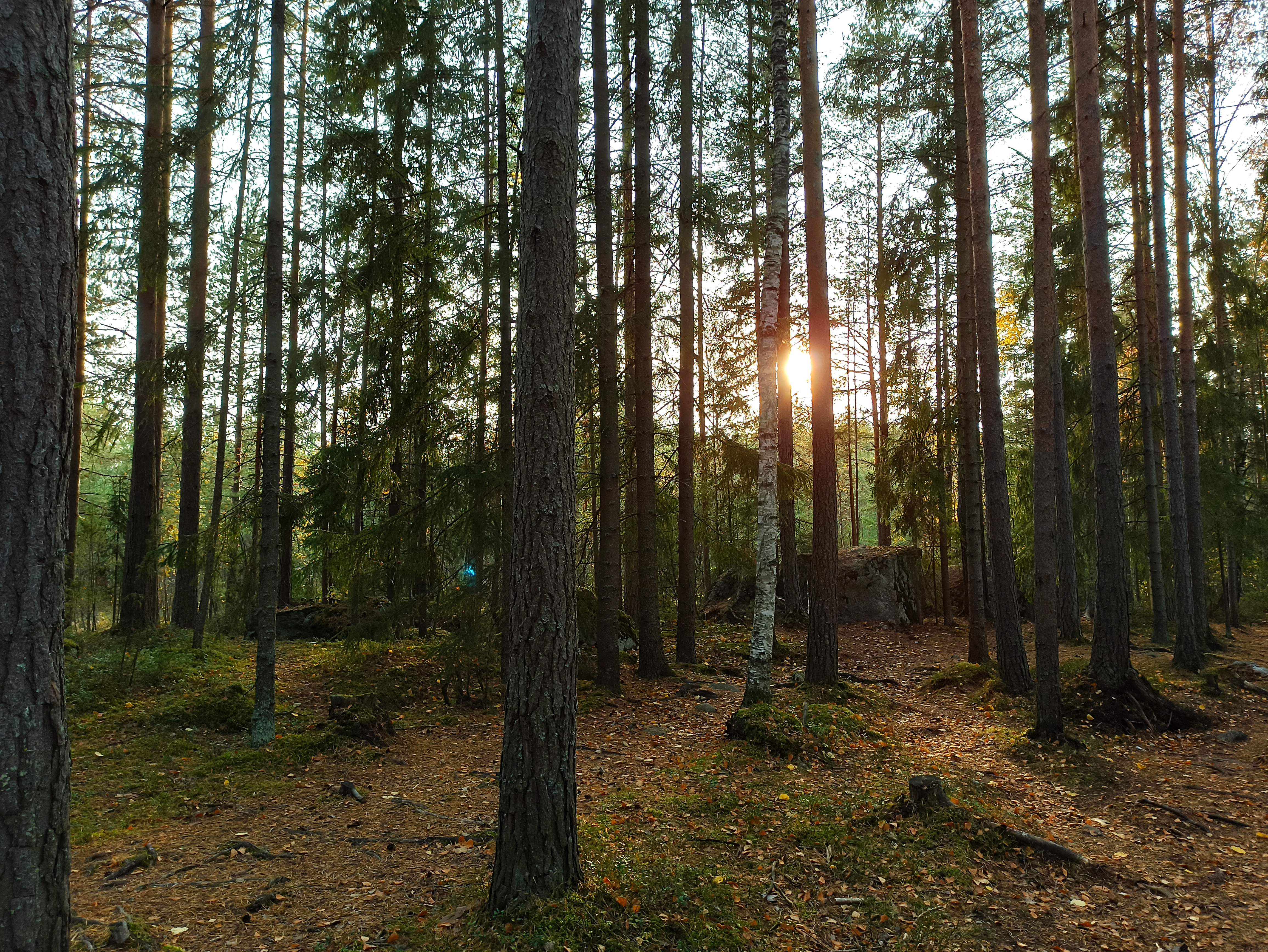Dry toilets are now used in Finland even in school buildings and many rural homes. In an ideal house in the rural area that is self-sufficient, a dry toilet can be a good idea of collecting excreta to be used for composting. Composting can provide fertilizer for the home garden to have ecological ways of growing plants. The process of composting also generates heat that can be used for heating water.
There are different types of toilets that can save water. Below can be seen a dry toilet with a container of peat moss next to it, and a vacuum toilet used to save water.

PICTURES 1 & 2. Dry toilet (on the left) and vacuum toilet (on the right) at TAMK Kauppi campus.
The dry toilet is a great option for producing renewable energy. A dry toilet is a toilet that does not use water to flush, the excreta is not moved through sewage, but the dry toilet has a drop hole or container where the excreta is collected. Dry toilets have 3 main positive aspects:
- They save water – this is a great feature both in developed countries and countries
where water scarcity is an important issue. - prevent pollution of surface water or groundwater – there is no mixing of excreta
with water in sewage systems, thus there is no contribution to eutrophication. - Possibility to reuse excreta for further treatment by drying it or composting:
composting can create further green energy.
Irvine, Lamont & Antizar-Ladislao have conducted a study about the benefits of dry toilets and the practicalities are specified in the study. The composting process created from the excreta collected produces high heat energy during the composting. For this reason, in
the tunnel space above the compost, a method of absorbing the heat present in the evacuated air was proposed. Design and specifications were made for a custom air-water heat exchanger using stainless steel piping.
The use of dry toilets or vacuum toilets can be an affordable system to use renewable energies. They are cheap and easy to maintain in smaller scales, and they don’t smell if they are used correctly (e.g., using peat moss to cover excreta reduces the smell substantially). This system might seem revolting to some people, but I believe it is a revolutionary and sustainable way to look at toilets and introduce circular economy in our daily lives.
References
1. Irvine, G., Lamont, E. R., & Antizar-Ladislao, B. (2010). Energy from Waste: Reuse of Compost Heat as a Source of Renewable Energy. International Journal of Chemical Engineering, 2010, 627930.





Comments